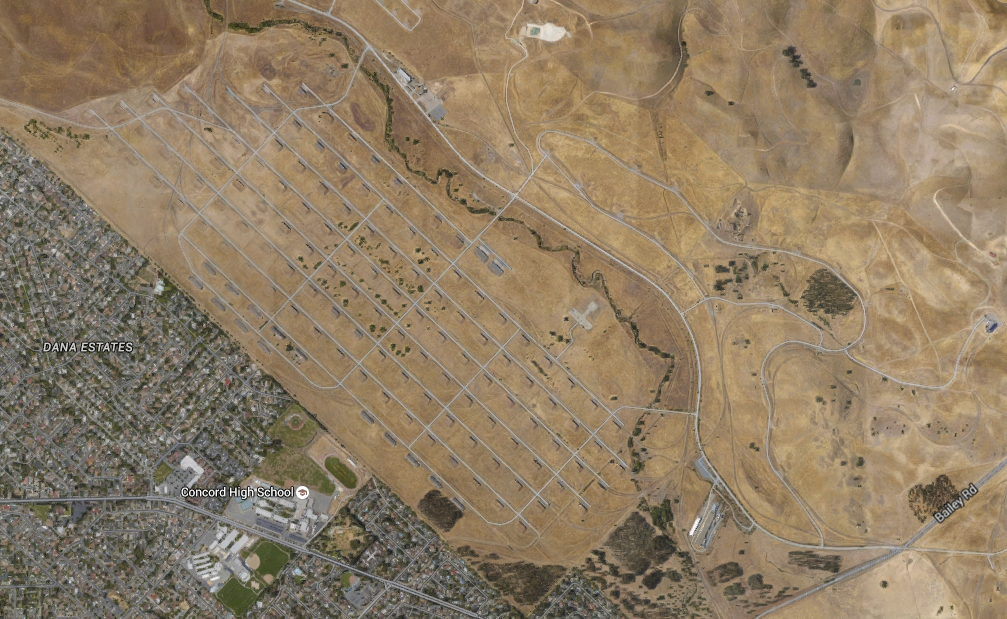Self-driving cars are getting closer to hitting our nation’s highways by huge numbers every day. They can legally roam around California, Florida, Michigan and Nevada, although sightings still remain pretty rare. But don’t let that fool you: Anybody who’s anybody is building an autonomous vehicle.
On the tech side, Google, Apple and Tesla are all working on or rumored to be working on driverless cars. But what of the conventional auto-makers? BMW, Audi, and Daimler are in, buying a $2.8 billion mapping company together so their cars don’t get lost. Mercedes is reportedly launching a self-steering car in March 2016. And Ford has a Silicon Valley office, so what does that tell you? Even Uber wants its own smart wheels in order to cut drivers out of the equation.
So where are all these futuristic cars learning to drive? One answer is a big, empty California space called GoMentum Station. Carved out of the former Concord Naval Weapons Station, this 2,100-acre area has 20 miles of roads, perfect for taking a robotic car through driver’s ed. Located in Concord, the testing ground is only a 60-mile drive from Silicon Valley, making it easily accessible for many technology giants.
But not just anyone can roll into GoMentum Station. Closed to the public, the facility isn’t even listed on Google Maps, but you can find it there. As a former naval base, it was already a secure facility when it opened for business in October 2014, something that has attracted Honda, Mercedes Benz and possibly Apple to the world’s largest self-driving test track.

The area was originally developed as a World War II naval base with two parts: an inland zone where GoMentum is now located, and a tidal area located on Suisun Bay. The base was used for munition storage throughout the years, and the waterfront patch was the scene of the infamous Port Chicago disaster, a 1944 incident in which 320 African American soldiers were killed when munitions exploded while being loaded into a ship. Terrified of another explosion, some 250 soldiers refused to handle the dangerous weapons after that, a protest that resulted in mutiny charges for 50 of them. This disaster and the events that followed exposed racism in the military, and its shockwaves can still be felt today.
But in even in its present state, GoMentum Station continues to reflect its militarized past. Managed by the Contra Costa Transportation Authority, the area looks like the Ukrainian city of Chernobyl years after its Soviet-era nuclear meltdown. The roads are cracked. The painted lines have faded. The landscaping is rough. But on the plus side, real-world road conditions are rarely pristine, and a runaway tumbleweed is a great stand-in for a ball-playing child when you’re testing autonomous cars.
As for the sights to see, a 7-mile-long roadway is great for testing high-speed driving. A pair of 1,400 foot long tunnels are ideal for putting GPS and other sensors through their paces. Railroad crossings help the self-driving cars face real-world scenarios. And parking lots aplenty let the robot-cars learn to parallel park without hoards of lookie-lous making them self-conscious.
As for when we’ll start to see more of the real deal on the highways, that’s all up in the air. While many tech and automotive companies are racing to reinvent the wheels, everything from insurance concerns to regulatory issues need to be tackled before driverless cars can tackle the onramps of the world en masse. The wait could be as torturous as a visit to the DMV. Speaking of, why can’t tech fix that?
More Must-Reads from TIME
- Introducing the 2024 TIME100 Next
- The Reinvention of J.D. Vance
- How to Survive Election Season Without Losing Your Mind
- Welcome to the Golden Age of Scams
- Did the Pandemic Break Our Brains?
- The Many Lives of Jack Antonoff
- 33 True Crime Documentaries That Shaped the Genre
- Why Gut Health Issues Are More Common in Women
Contact us at letters@time.com